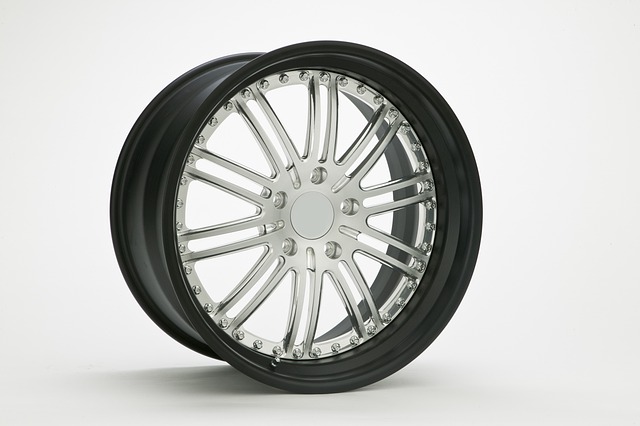Looking to register your car in California? This comprehensive guide walks you through the entire process, from understanding eligibility to obtaining a license plate. Discover the essential steps, including gathering required documents, completing the DMV application, and verifying your vehicle’s Identification Number (VIN) using reliable tools like a dmv vin verifier. Ensure a smooth registration experience and hit the roads legally.
- Understand Eligibility for Car Registration in California
- Gather Required Documents for Car Registration
- Complete Application Process at the DMV
- Verify Vehicle Identification Number (VIN)
- Pay Registration Fees and Obtain License Plate
Understand Eligibility for Car Registration in California

Before you begin the registration process, it’s important to understand if your vehicle is eligible for car registration in California. Most personal vehicles, including cars, motorcycles, and recreational vehicles (RVs), can be registered with the Department of Motor Vehicles (DMV). However, certain types of vehicles may not meet the requirements or have additional regulations. For example, vehicles used exclusively for racing, off-road use, or those lacking proper safety features might face restrictions.
One crucial aspect to consider is ensuring your vehicle has a valid and accurate Vehicle Identification Number (VIN) inspection. The DMV uses a VIN verifier to cross-check the information against their records. This process helps combat vehicle theft and ensures the car’s history is transparent. You can even utilize a mobile VIN verifier for convenience, allowing you to perform an initial inspection before visiting the DMV.
Gather Required Documents for Car Registration

Before you begin the registration process, it’s crucial to gather all the necessary documents. The California Department of Motor Vehicles (DMV) requires specific paperwork for a smooth car registration. One essential tool in this process is a DMV VIN verifier, which allows you to quickly validate important vehicle information. Start by collecting your vehicle’s registration from previous years, proof of insurance, and a valid driver’s license or state ID card. Additionally, you’ll need the Vehicle Identification Number (VIN) from your car, which can be located on the vehicle’s title or by conducting a mobile VIN inspection or verification.
Remember to bring these documents when visiting a DMV office or utilizing their online services. Having all the required paperwork ready ensures that you can register your car efficiently and without delays.
Complete Application Process at the DMV

To complete the car registration process in California, you’ll need to visit your local Department of Motor Vehicles (DMV) office. Here’s a step-by-step breakdown of what to expect during the application process. Start by gathering all necessary documents, including proof of ownership, identification, and insurance. Next, proceed to the DMV counter with your vehicle’s registration fees ready. A DMV agent will guide you through filling out Form DMV-123, requiring details about your car, such as make, model, year, and unique identifier—the Vehicle Identification Number (VIN). This VIN is crucial for accurate verification by the DMV’s vin verifier system.
For a more convenient experience, consider utilizing the DMV’s online services or even mobile vin inspection options available in California. These methods allow you to submit your application remotely, saving time while ensuring your car’s information is accurately recorded and verified by the state’s vin verifier database. This streamlined process enables efficient registration for all vehicle types, from cars to motorcycles.
Verify Vehicle Identification Number (VIN)

Before you begin the registration process, it’s crucial to ensure your vehicle’s Vehicle Identification Number (VIN) is accurate and readily available. This unique 17-character code acts as a fingerprint for your car, providing essential details about its make, model, year, and more. One effective way to verify the VIN is by using a DMV vin verifier or a reliable mobile vin inspection app. These tools allow you to quickly cross-reference the VIN with official databases, ensuring its validity.
Accurate VIN information is critical as it facilitates the registration process, helps prevent fraud, and ensures your vehicle’s history is accurately documented. With a simple mobile vin verification, you can save time and avoid potential issues later on, making it a smart step in preparing your car for California registration.
Pay Registration Fees and Obtain License Plate

After completing your vehicle’s registration application at the California DMV (Department of Motor Vehicles), it’s time to settle the fees. The cost varies depending on your vehicle type and other factors, but typically includes a base fee plus a vehicle age fee. You can pay these fees online or in person at any DMV branch. Once your payment is processed, you’ll receive a registration certificate and, if applicable, a mobile vin inspection (or VIN inspection) report. This report verifies the Vehicle Identification Number (VIN) of your car to ensure it matches the information on record.
To streamline the process, consider using a mobile VIN verifier service. These services allow you to have your vehicle’s VIN checked remotely, saving you time and effort. With your registration certificate and verified VIN, you can now obtain license plates for your car. The DMV will issue standard license plates or specialized ones if required, ensuring your vehicle is legally registered and ready for the road.
Registering a car in California is a straightforward process, but it requires careful preparation. By understanding eligibility criteria, gathering essential documents, and completing the application at the DMV, you can ensure a smooth experience. A crucial step is to verify the Vehicle Identification Number (VIN) using reliable tools provided by the dmv vin verifier, ensuring accuracy and security. Once all fees are paid and license plates obtained, your vehicle will be officially registered, allowing you to hit the road with confidence in the Golden State.
